Today, we will be reviewing the Maxfind M6 Drive Kit.
This is an $869 (USD) all-terrain electric skateboard drive kit. To those who are new to the e-skate hobby, a drive kit is what you attach on skateboards or longboard decks to instantly transform them into an electric skateboard.
Aside from Maxfind, other notable drive kits in the e-skate scene are Loaded x Unlimited, Mellow Drive, and Revel kits, but Maxfind M6 Drive Kit challenges its competitors for being the only all-terrain drive kit on the market.
So if there’s a pretty awesome deck you want to use, and don’t mind the effort of drilling 6 screw holes on the deck, the M6 Drive kit is an option.
Will it be a good option though? Let’s find out!
Let’s take a look at the specs first.
Build and Specs
- ESC: 10s Hobbywing ESC
- Battery: 10s2p Samsung 30Q cells (6.0Ah and 216 wh), Hot-swappable
- Marketed range: 16km
- Motors: Dual 1200W hub motors
- Top speed: 38km/h
- Wheels: 6.5 in airless rubber wheels
- Trucks: Double Kingpin, 11.4 in, 98a bushings
- Weight: 18.7lbs or 8.5kg (deck not included)
Electronic Speed Controller
The Maxfind M6 Drive Kit uses a 10s Hobbywing Electronic Speed Controller. Those who are familiar with the Hobbywing ESC already know that this speed controller allows exceptionally smooth acceleration and braking, with intuitive control.
Unfortunately, this is an older generation of Hobbywing ESC, which means this kit has no smart power-on. Smart power-on is a very convenient feature if you want the board to turn on with just a press on the remote.
To know more about electronic speed controllers, click here.
Hot-swappable battery
For the battery, M6 Drive uses 10s2p Samsung 30Q cells, which means you’ll get 6.0 Amp-hours and 216 watt-hours. These are genuine Samsung cells, and Maxfind cited it as the reason behind their higher cost. Hence, the price tag.
Using a better cell might make the battery last longer, but it definitely didn’t help increase M6’s range. The kit’s marketed range is 10miles or 16km, but we only got 7.5 miles or 12km out of it.
The batteries are hot-swappable, though. So, you can technically ride for hours as long as you carry extra battery packs. However, the batteries are pretty expensive and will cost you $200 for each extra pack.
Dual Hub Motors
Next, let’s talk about the motors. This drive kit uses Dual 1200W hub motors. Hub motors don’t require belts and are less prone to maintenance. Another plus for hub drives is that they sound quieter than belt motors.
However, a hub drive has less torque than a belt drive or gear drive, that’s why we rarely see it in an all-terrain set-up. We’re pretty excited to test how well the dual 1200W motors will perform in an off-road setting, given that it has less torque for acceleration.
The marketed speed specs are 23mph or 38km/h, and we managed to hit that.
Airless Rubber Wheels
For the wheels, the M6 kit uses 6.5-inches airless rubber wheels. You won’t need to worry about the tire pressure, nor puncturing them.
On the downside, you can expect a more bumpy ride, but the wheels are definitely big enough to roll over anything on a paved road.
Double Kingpin Trucks
For the truck, the Maxfind M6 Kit uses 11.4-inch Double Kingpin Trucks with 98a bushing. Reverse kingpin trucks are more commonly used for all-terrain, so we’re also interested in how this set-up will play out.
For those who don’t know, Double Kingpin Trucks allow easier changes in direction with tighter turns.
However, after reviewing more than a few DKP trucks, we know that the quality between good and bad Double Kingpin trucks is very far from each other. The good ones have great rebound to the center which allows easy turns while still being very stable. The less great ones, however, are twitchy and can feel unstable during high speed.
Unfortunately, we are very familiar with Maxfind’s DKP trucks and know that it belongs to the latter group.
To know more about electric skateboard trucks, click here.
Lighter than most all-terrain eskates
The drive kit weighs 18.7lbs or 8.5kg alone. After slapping the drive kit onto our drop-through maple deck, the board only weighs 23lbs or 10.5 kg. This is considered very light!
Most all-terrain boards weigh around 28lbs or 13kg. With a smaller battery pack than your usual all-terrain boards, the lighter weight is probably an unexpected benefit.
Riding Experience
Now that we’ve gone through the build and specs, it’s time to ride!
Obviously, a huge part of your riding experience will depend on what deck you use.
In our review, we used a drop-through deck that’s rather stiff, but we think the best deck for this would probably be an aggressive double drop deck, since the drive kit is very slim in profile, and wouldn’t need much ground clearance. Plus, a lower riding height will make the board ride more stable, compensating for the twitchiness of the trucks.
Twitchy trucks have poor rebound and won’t help you return to the center easily. You might get a feeling of swaying when turning. The 98a bushing is supposed to be tight and hard, but it didn’t help much, and changing the bushing would probably improve its quality.
TAKE NOTE: the board side bushing can’t be tightened by the T-tool provided by Maxfind, so you would need to find a spanner and adjust the tightness yourself.
When it comes to speed control, the acceleration and braking have 4 speed modes. And as always, every speed mode is perfectly smooth with Hobbywing ESC. This speed controller may not always be powerful, but no such worries for the M6 Kits. The acceleration and brakes are both very strong in the top speed mode.
Better than street wheels
When it comes to all-terrain performance, the 6.5-inch wheels perform well on rough roads. These are airless rubber wheels, so they weren’t as good as pneumatic wheels, but even then they’re still much better than Cloudwheels, Windwheels, or any street wheels. You will still feel the vibrations, but it won’t be uncomfortable.


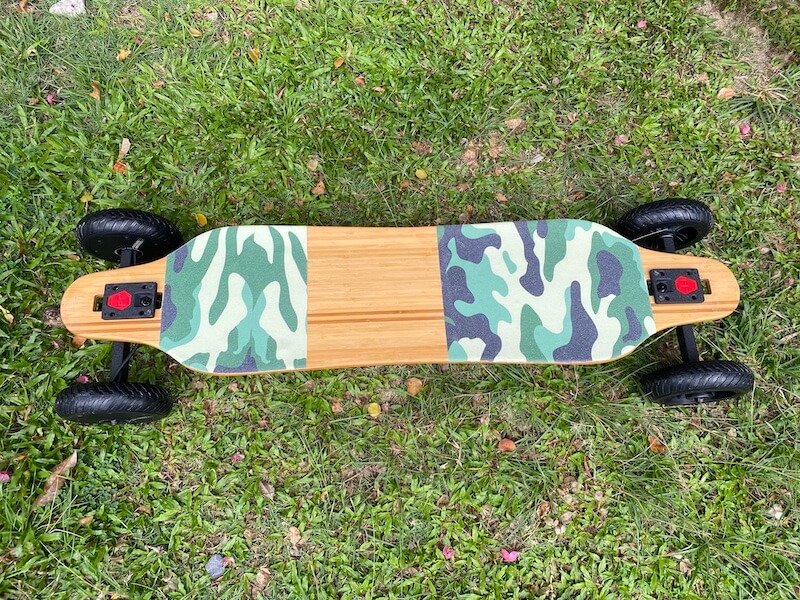
Comparing the experience to pneumatic wheels however, I found the airless rubber wheels less impressive. But when compared with your typical street wheels, these are much better.
We tried it on sand, grass, and rough roads with gravel or rocks.
Riding on sand is fine. There was enough torque from the motors to handle it. The same goes for grass. The motors are powerful enough to go through thick grass and coconut husk. It’s just not strong enough for gravel or small rocks.
THE VERDICT
Now that we know the quality of the build and specs, will the process of slapping this drive kit on a board of your choosing be worth it?
The Maxfind M6 Drive kit is a decent drive kit that offers decent performance. Its worst flaw would be the truck, but it can be fixed by swapping in your own bushing.
The rather small battery pack is not a big deal, since the battery can be easily swapped out in the middle of the ride. And going with a smaller battery looks pretty sleek. It doesn’t only allow more clearance, it’s also lighter in weight.
On the value side of things, being able to choose an awesome deck is a factor that you are obviously paying extra for. Maxfind M6 Drive Kits go around the same price when compared to similar performing, yet completely built AT boards that come with a deck.
For example, Maxfind’s own FF Plus – All-Terrain comes with a pretty sweet carbon fiber finish flexible deck, and only costs a hundred dollar extra! ($969). Unless you are very insistent on using your preferred deck, going with the FF Plus or another brand’s complete build would probably be a better option.
As a person who doesn’t want to hold a screwdriver unless I absolutely have to, an all-terrain drive kit is not that appealing to me. However, if you have a bad-ass deck that you want to convert into an all-terrain eskate, the M6 Drive Kit is currently your only choice. It is the only all-terrain drive kit on the market, after all. At least it is a reasonably decent one, and has a US warehouse to provide fast shipping.
If you are interested in buying a Maxfind, be sure to check out our affiliate discount link here and uses code: “ESKATEHQ” during checkout.
It will help you get a small monetary discount and helps us out too. On top of that, you’ll be tagged as an Electric Skateboard HQ customer and probably be treated better. Cheers!








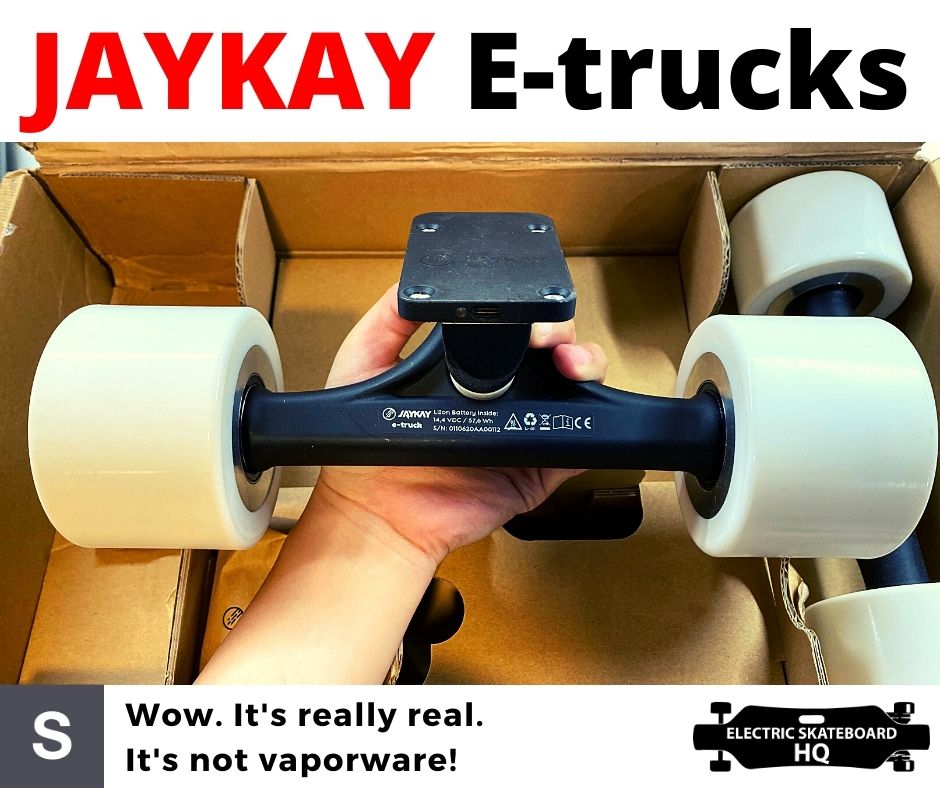


































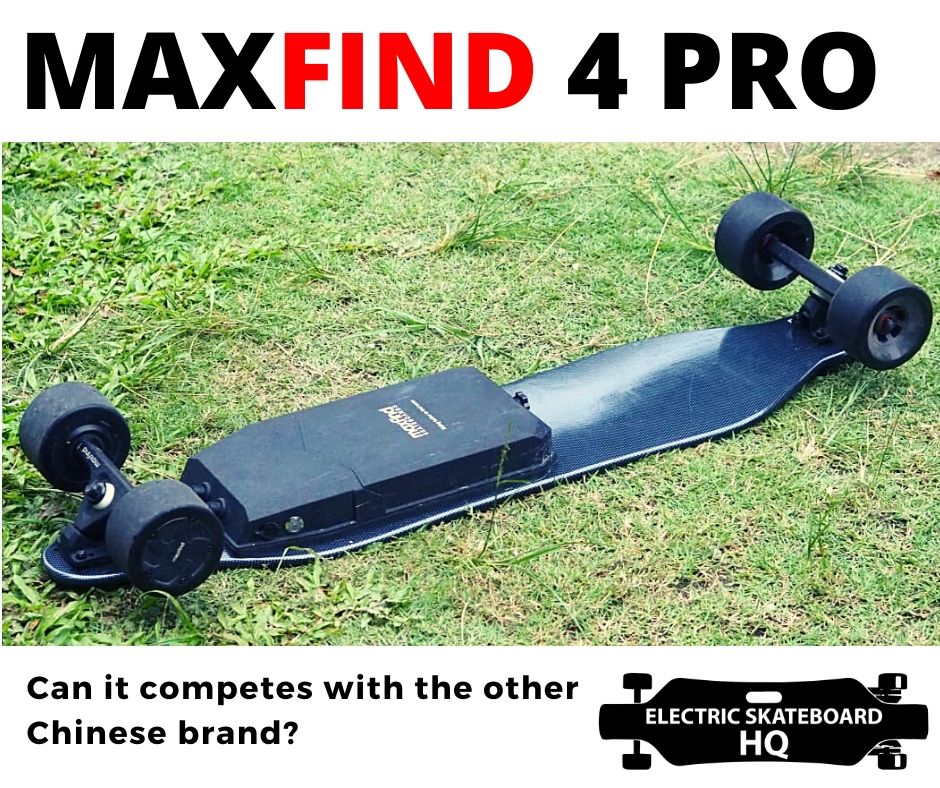





















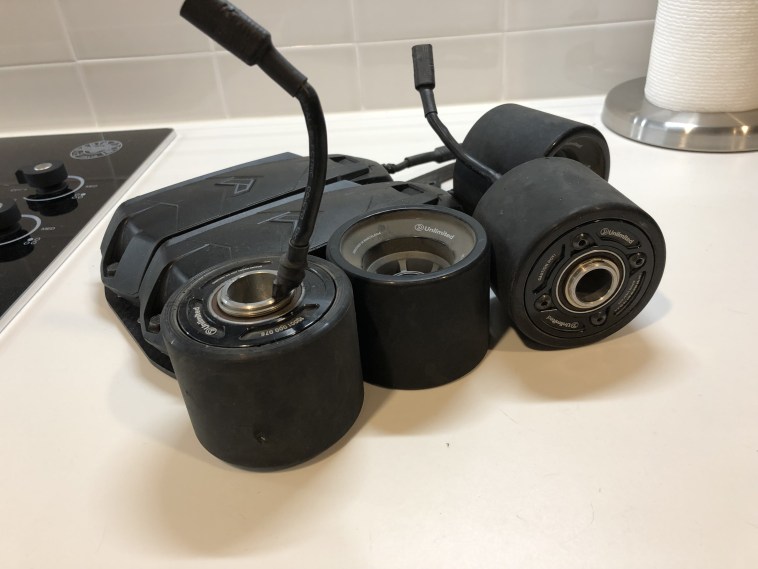
















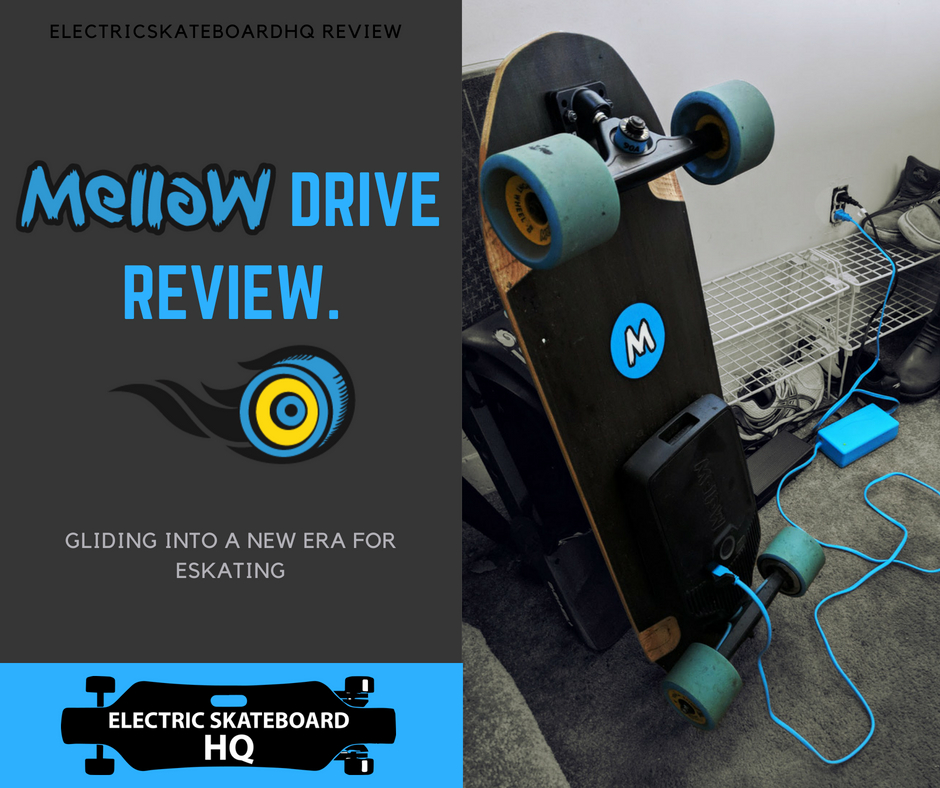





 (Pardon my dirt, had to test the water-proofing…)
(Pardon my dirt, had to test the water-proofing…)
 (A couple seconds with handy-dandy pliers and I was good to go again)
(A couple seconds with handy-dandy pliers and I was good to go again)
